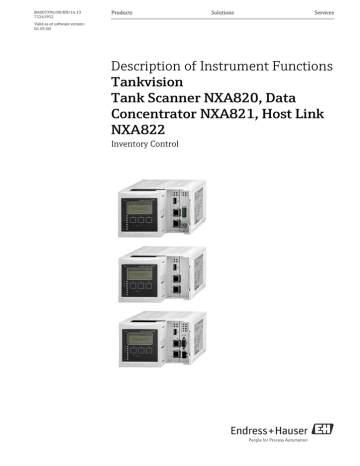advertisement
▼
Scroll to page 2
of 230
advertisement
* Your assessment is very important for improving the workof artificial intelligence, which forms the content of this project
Key Features
- Real-time tank level monitoring and data acquisition
- Inventory management and optimization
- Alarm and event management
- Data logging and reporting
- Supports multiple tank types and protocols
- User-friendly interface for easy operation
- Advanced data analysis and trending tools
- Remote access and monitoring capabilities
Related manuals
Frequently Answers and Questions
What are the benefits of using the Tankvision system?
The Tankvision system provides numerous benefits, including improved inventory accuracy, reduced risk of overfills and spills, enhanced operational efficiency, and better decision-making based on real-time data.
What types of tanks can the Tankvision system monitor?
The Tankvision system can monitor a wide range of tank types, including above-ground and underground tanks, horizontal and vertical tanks, single- and double-walled tanks, and tanks with various shapes and sizes.
How does the Tankvision system communicate with tank sensors?
The Tankvision system communicates with tank sensors using various protocols, including Modbus, HART, and proprietary protocols. This allows for seamless integration with a wide range of sensor types and manufacturers.
What types of data does the Tankvision system collect?
The Tankvision system collects a comprehensive range of data from tank sensors, including level, temperature, pressure, volume, and other parameters. This data is stored in a central database for easy access and analysis.
How can I access and analyze the data collected by the Tankvision system?
The Tankvision system provides a user-friendly interface for accessing and analyzing data. Users can view real-time data, historical trends, and generate reports to gain insights into tank operations and inventory status.
advertisement
